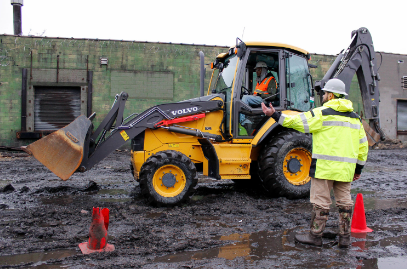Introduction to Job Site Safety
Job site safety is paramount in the construction industry. In addition to protecting workers, maintaining a secure workplace encourages effectiveness and productivity. One key aspect of job site safety is the appropriate use of alturnamats to prevent accidents and provide stability for heavy machinery. Handling heavy equipment demands more than just skill; it requires a reliable safety foundation.
The National Safety Council states that the construction sector is responsible for a significant number of workplace injuries, leading to thousands of incidents annually. Investing in quality equipment mats, such as alturnamats, can significantly reduce these incidents, providing a safer environment for all personnel.
Choosing the Right Equipment Mats
Selecting the suitable equipment mats is crucial for maintaining a safe work environment. A few things to think about are the weight of the equipment, ground conditions, and the type of material the mats are made of. Each of these elements plays a role in ensuring stability and safety.
Weight Capacity
Different mats have varying weight capacities. It’s essential to identify mats that can support the weight of the heavy machinery being used. Overloading a mat can result in breakage or shifting, leading to accidents. For instance, a mat that can support up to 50 tons may be required for large cranes, while lighter machinery, such as forklifts, may require mats with lower weight capacities. Ensuring compatibility between equipment and mats is crucial to avoid unexpected mishaps.
Ground Conditions
Consider the type of terrain where the mats will be used. For example, muddy or sandy areas might require mats with better traction and drainage capabilities. Mats designed for rough terrains provide enhanced grip and prevent machinery from sinking. Selecting the appropriate mat for specific ground conditions ensures that the equipment remains stable and operational, even in challenging environments.
Material Type
Materials such as high-density polyethylene (HDPE) are preferred for their durability and resistance to chemicals and extreme weather. Choosing the suitable material ensures longevity and effectiveness in diverse conditions. HDPE mats are known for their flexibility and sturdiness, making them ideal for various industrial applications. Additionally, some mats incorporate additives to enhance their resistance to ultraviolet (UV) rays, further extending their lifespan in outdoor settings.
Securing Mats
Secure mats with appropriate fastening tools. Depending on the mat design, this might include using stakes or specialized connectors. Securing methods help maintain the mats’ position, preventing them from shifting under the weight of heavy equipment. Consistent monitoring ensures that the mats remain anchored adequately throughout the project.
Ensuring Employee Safety
Employees should be trained on the proper use and maintenance of equipment mats. Comprehensive training programs can include demonstrations of correct installation techniques and information on recognizing potential hazards. Safety drills and continuous education keep employees vigilant and prepared.
Safety Drills
Periodic safety drills help reinforce the importance of proper mat usage and prepare employees for emergencies. Regular drills foster a culture of safety and readiness, enabling workers to respond effectively to potential hazards.
Adapting to Weather Conditions
Weather conditions can significantly impact equipment mat efficacy. In rainy or icy conditions, mats might become slippery, requiring additional precautions. Using mats with textured surfaces can help improve traction. Always consider the weather forecast when planning job site activities.

